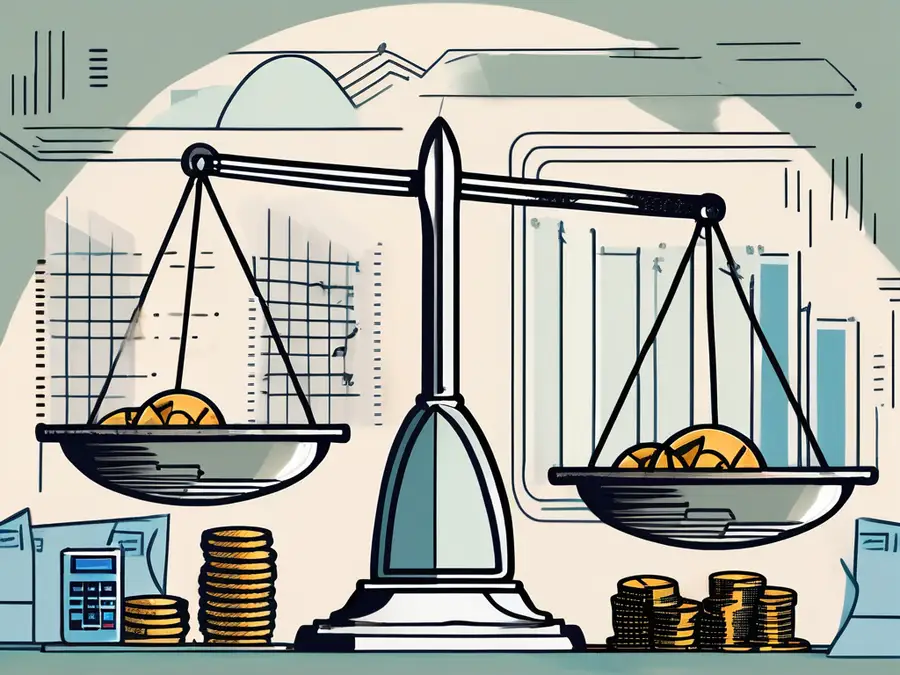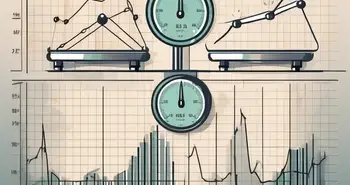Cost of Carry: The Key Concept Every Trader Should Know

Understanding the concept of cost of carry is essential for every trader looking to master their discipline. Having navigated the complex waters of trading for years, I can attest to the profound impact that this key concept has on positions, especially when dealing with commodities and financial instruments. Let’s delve into cost of carry and unravel its significance in trading.
Understanding the Basics of Cost of Carry
Definition and Importance of Cost of Carry
The cost of carry is defined as the cost incurred by holding a position in an asset over a period. This concept encompasses various expenses such as storage, interest on borrowed funds, and insurance, depending on the nature of the asset. Understanding this cost is crucial for traders because it helps in calculating the fair value of futures contracts and the profitability of various trading strategies.
Throughout my trading career, I’ve often encountered situations where traders underestimate the significance of the cost of carry. It’s not just a number you plug into a formula; it provides insights into market trends and helps in making informed decisions on when to enter or exit a position. Ignoring it can lead to unexpected losses, a lesson I learned the hard way during my early days as a trader. For instance, during a volatile market phase, I once overlooked the rising cost of carry associated with holding onto a commodity, which ultimately eroded my profit margins significantly. This experience underscored the necessity of incorporating all potential costs into my trading strategy.
Components of Cost of Carry
The primary components of cost of carry include:
- Storage Costs: For physical assets like oil or agricultural products, these are the costs incurred for storing the commodity until it is sold.
- Financing Costs: These represent the interest costs on borrowed funds used to purchase the asset.
- Insurance Costs: Insurance is often necessary to safeguard the asset against losses, which is an additional cost to consider.
- Opportunity Costs: This refers to the potential returns from investing the funds elsewhere instead of holding the position.
In addition to these components, it’s important to recognize that the cost of carry can fluctuate based on market conditions. For example, during periods of high demand or low supply, storage costs may spike, impacting the overall cost of carry. Similarly, interest rates can influence financing costs, making it essential for traders to stay updated on economic indicators and market trends. Furthermore, the opportunity cost can vary significantly depending on alternative investment options available at any given time. A thorough understanding of these dynamics not only aids in precise calculations but also enhances a trader's ability to adapt strategies in response to changing market conditions.
Moreover, the implications of cost of carry extend beyond individual trading decisions. For institutional investors and large-scale traders, these costs can affect portfolio management strategies, influencing asset allocation and risk assessment. In futures markets, for instance, the cost of carry plays a pivotal role in determining the pricing of contracts. Traders often analyze the relationship between spot prices and futures prices to gauge market sentiment and predict future price movements. By incorporating the cost of carry into their analyses, traders can better position themselves to capitalize on market inefficiencies, ultimately leading to more informed and strategic trading decisions.
The Role of Cost of Carry in Trading
Impact on Futures Pricing
The cost of carry significantly affects futures pricing. Futures prices are generally influenced by the underlying asset's spot price, combined with the cost of carry. When the cost of carry is high, the futures price tends to be higher than the spot price, reflecting the additional costs incurred for holding the asset. Conversely, if the cost of carry is low, the futures price may be closer to the spot price.
This interplay of prices became particularly clear to me during a trading simulation exercise back in college. The instructor emphasized how shifts in interest rates or storage costs could drastically alter futures prices, and that day was a turning point for many of my peers—myself included. The lesson was crystal clear: understanding the cost of carry leads to more accurate pricing strategies.
Influence on Spot and Forward Prices
Cost of carry also exerts influence over spot and forward prices. In scenarios where a commodity demand surge drives spot prices higher, understanding the associated costs can help determine if entering a forward contract is advantageous. Longer holding times increase the cost of carry, which can ultimately influence future pricing strategies.
Calculating the Cost of Carry
Factors Affecting Cost of Carry
Various factors play a role in determining the cost of carry:
- Market Interest Rates: Higher interest rates increase financing costs, thus raising the overall cost of carry.
- Storage Costs: Fluctuations in storage costs as a result of supply and demand shifts will directly impact the cost of carry.
- Time Period: The longer an asset is held, the greater the cumulative cost of carry will become.
Step-by-step Calculation Process
To calculate the cost of carry effectively, follow these steps:
- Identify the underlying asset and its spot price.
- Determine the interest rate applicable for financing the purchase.
- Calculate any storage and insurance costs associated with the asset.
- Factor in the expected holding period to determine the total cost of holding the asset.
- Compile all these components to derive the total cost of carry.
Strategies for Managing Cost of Carry
Hedging Techniques
Effective management of cost of carry involves anticipating and mitigating risks using hedging techniques. Utilizing futures contracts to lock in prices can shield traders from rising prices and associated carrying costs. Coupled with options strategies, such as buying puts, traders can secure additional upside potential while minimizing exposure to carrying costs.
Risk Management and Cost of Carry
Incorporating the cost of carry into a comprehensive risk management strategy is imperative. Regular assessment and adjustments based on market conditions can help maintain profitability while managing risk. I've often stressed the importance of continuous learning and adapting strategies in my training sessions; being vigilant about the cost of carry has made all the difference for my trading outcomes.
The Relationship Between Cost of Carry and Market Conditions
Effect of Interest Rates on Cost of Carry
Market conditions, particularly interest rates, can greatly influence the cost of carry. As rates rise, the financing component of carrying costs expands, ultimately affecting futures pricing and traders' decision-making processes. Markedly, understanding these dynamics allows traders to strategize effectively around market shifts.
How Inflation Affects Cost of Carry
Inflation can also play a critical role by impacting storage costs and the general economic environment. During high inflation periods, costs can escalate quickly, which may prompt traders to reassess their positions and carry strategies. Awareness of how inflationary pressures affect costs can facilitate better trading decisions and ultimately enhance performance.
Frequently Asked Questions (FAQ)
What is cost of carry?
Cost of carry is the total cost incurred by holding an asset, including finance, storage, and opportunity costs.
Why is cost of carry important for traders?
Understanding cost of carry is essential for accurately pricing futures, managing risks, and making informed trading decisions.
How do market conditions affect cost of carry?
Market conditions, including interest rates and inflation, can significantly impact the cost components involved in carrying an asset, influencing both pricing and strategy.
As a seasoned trader, I urge you to delve deeper into the intricacies of cost of carry. With this knowledge, you’ll be better equipped to navigate the ever-evolving trading landscape successfully.
Now that you're equipped with the knowledge of cost of carry and its impact on trading strategies, take your trading to the next level with Morpher. Experience the future of investing on a platform that offers zero fees, infinite liquidity, and the flexibility of fractional investing and short selling. With Morpher, you can trade with confidence, knowing you have full control over your funds and the option to leverage your trades up to 10x. Embrace the unique trading experience provided by Morpher's innovative use of blockchain technology. Sign Up and Get Your Free Sign Up Bonus today, and join the community of traders who are already transforming their trading journey with Morpher.

Disclaimer: All investments involve risk, and the past performance of a security, industry, sector, market, financial product, trading strategy, or individual’s trading does not guarantee future results or returns. Investors are fully responsible for any investment decisions they make. Such decisions should be based solely on an evaluation of their financial circumstances, investment objectives, risk tolerance, and liquidity needs. This post does not constitute investment advice.

Painless trading for everyone
Hundreds of markets all in one place - Apple, Bitcoin, Gold, Watches, NFTs, Sneakers and so much more.

Painless trading for everyone
Hundreds of markets all in one place - Apple, Bitcoin, Gold, Watches, NFTs, Sneakers and so much more.








